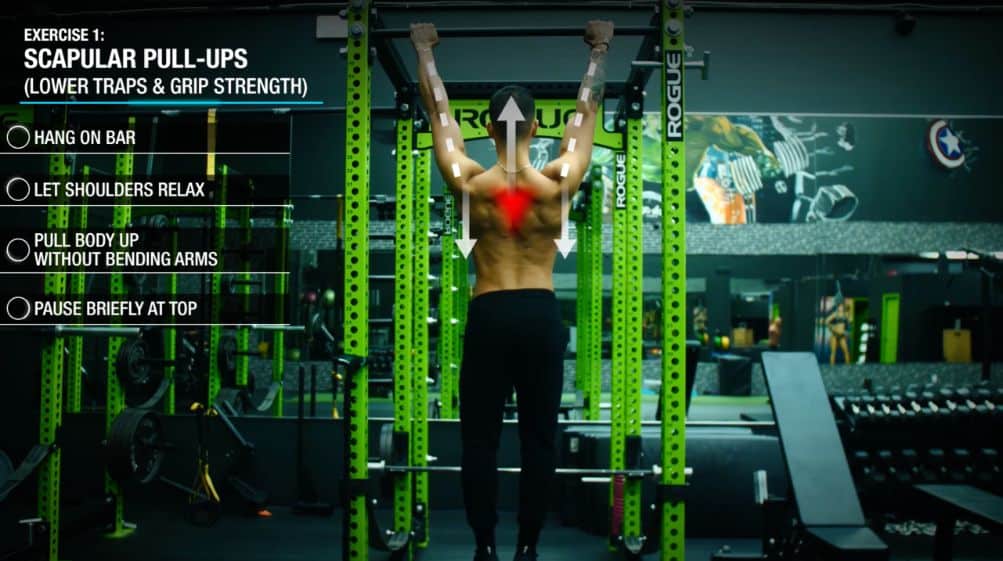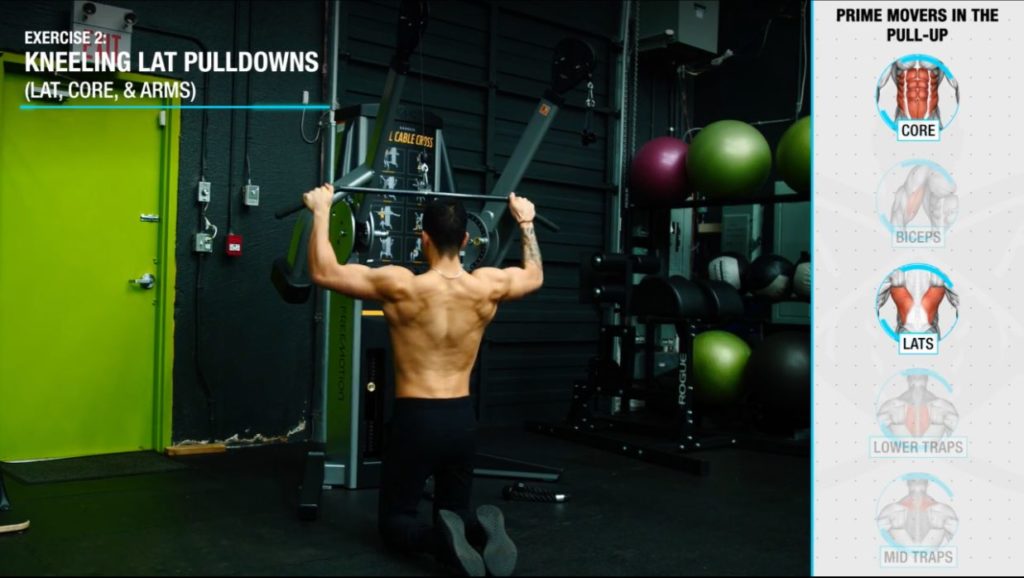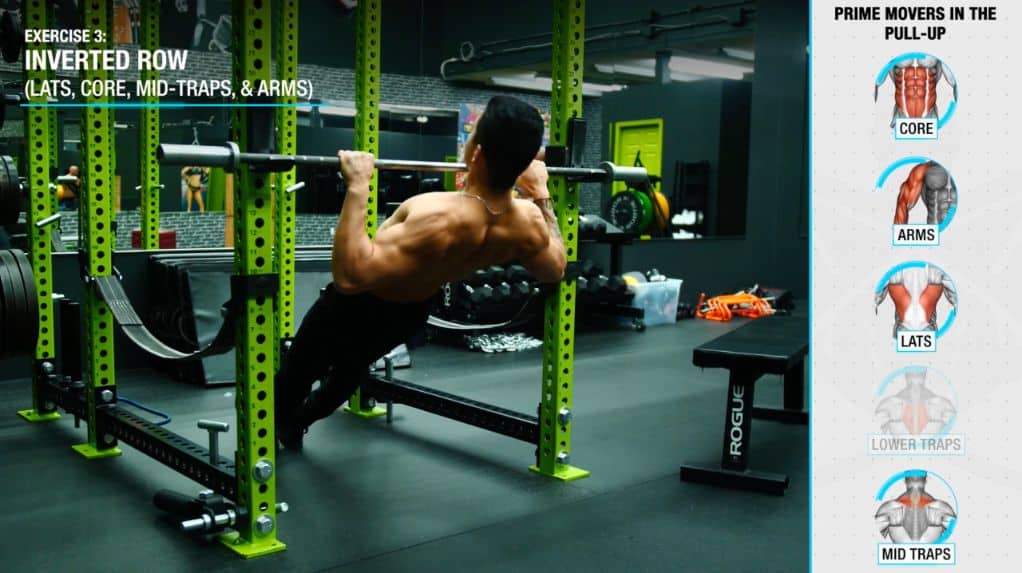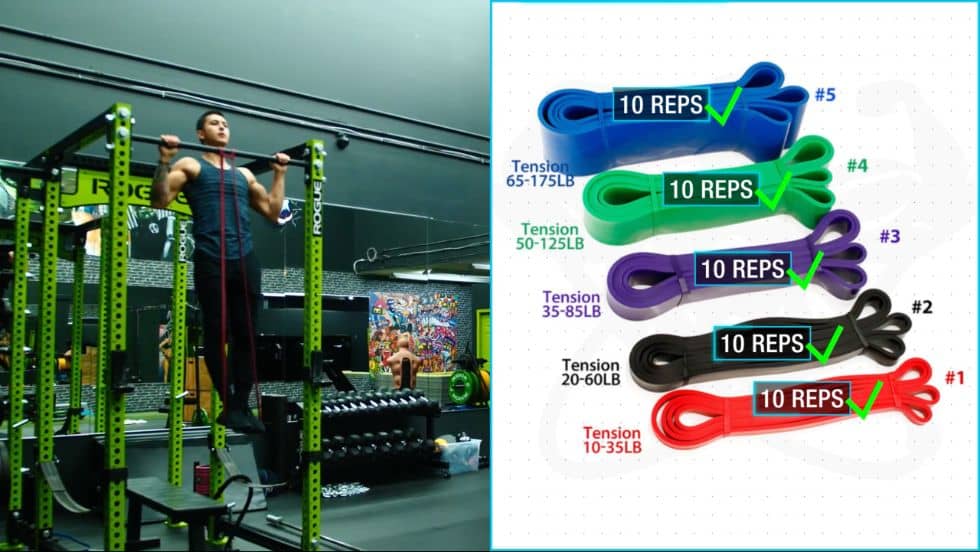How To Increase Pull-Ups From 0 to 10+ Reps FAST (3 Science-Based Tips)
Want to learn how to increase pull-ups or maybe, how to perform your first-ever pull-up? Stick around.
Pull-ups are one of the best (if not the best) exercises for increasing the size and strength of your upper back and arm muscles. And they also contribute to your core development. I’d actually attribute most of my back development to the several years I’ve spent regularly performing pull-ups.
Not to mention, pull-ups are an extremely convenient exercise as well. Given that you can effectively work your back muscles with just a bar and the use of your body weight.
However, this exercise does come with a price. Pull-ups are generally one of the most difficult exercises to master. In fact, most individuals have yet to even achieve their first pull up. And for those who have, they’ll often struggle with learning how to increase their pull-ups rep scheme.
You’ve probably already tried a few things to help strengthen your pull-ups. Or achieve your first ever pull-up. Sadly, the truth is that most people simply use the wrong approaches. I’m sorry to break it to you. But hammering away with lat pulldowns and the assisted pull-up machine just won’t cut it.
In this article though, I’ll show you what research indicates are the most effective steps and routines to achieving your first pull-up. And then getting them into the double digits in the fastest way possible.
Before that: if you’re looking for a training program that’ll help you set up every single one of your workouts for optimal strength (AND muscle growth) on all your lifts, I’ve got just the thing for you. Every BWS program is designed to be an all-in-one, science-based process that’ll get you to your dream physique FAST. And best of all? It’s all rooted in science. For more information:
Click the button below to take my analysis quiz to discover the best program for you:
↓
How To Increase Pull-Ups Step 1: Strengthening The Prime Movers
The first thing you need to do is focus on strengthening the prime movers involved in the pull-up.
Based on research such as this 2018 EMG analysis, the muscles most activated and involved in the pull-up are:
- The core
- The biceps
- The lats
- And the mid and lower-traps
So, the above muscles are therefore the ones we’ll want to focus on strengthening.
As suggested by the researchers, by training each of these muscles with alternative pulling exercises, you’ll be able to strengthen them to the point where they are cumulatively strong enough for you to achieve a pull-up. And will also indirectly boost your pull-up strength in the event that you can only successfully do a few currently.
So, what are the best alternative exercises to strengthen these prime movers?
Exercise 1: Scapular Pull-Ups (Lower Traps & Grip Strength)
Well, first we’re going to start with scapular pull-ups. This exercise targets the lower traps, which is especially important for your pull-up strength.
Given that they’ve been shown to be more active and involved in the pull-up when compared to chin-ups or any other pull-up variation. And could therefore very well be the limiting factor for you.
To perform this exercise:
- You simply hang from a bar,
- Relax your shoulders down and away from your ears,
- And then pull your body up without allowing your elbows to bend with a slight pause at the top.
Why The Scapular Pull-Ups Are Crucial For How To Increase Pull-Ups
This movement will help with strengthening your lower traps as well as your grip strength for the pull-up. Perhaps more importantly, the movement itself is an essential component of the pull-up.
That's because the pull-up actually consists of two phases:
- Phase 1 - Involving the subtle motion of the scapular pull-up
- Phase 2 - Involving the actual pulling up to the bar.
It just doesn’t look like it because it’s typically performed as one fluid motion. But just showcases how important this seemingly insignificant muscle really is when it comes to your pull-up strength. Which then relates to how to increase your pull-ups.
Exercise 2: Kneeling Lat Pulldowns (Lat, Core, & Arms)
Next, we’ll move onto the kneeling lat pulldown. This exercise primarily helps to strengthen the lats and the core, as well as the biceps.
Here's something interesting. The traditional seated lat pulldown is quite a similar movement as the bodyweight pull-up. So, it seems as though it would transfer well in terms of strength improvements, right? Unfortunately, this just isn’t the case. As research has found that there’s actually a relatively weak correlation between the two exercises. Meaning that getting stronger in the seated lat pulldown doesn’t seem to increase pull-up strength very well.
And the reasoning for this seems to be with the lack of core involvement in the seated lat pulldown. Which you now know is a major component of the pull-up.
How To Increase Pull-Ups: Opt For The Kneeling Lat Pull Down Instead
Illustrating this is a 2018 EMG analysis, which aimed to find the best supplemental exercise for pull-up strength based on the pattern of muscle activation of the prime movers. And what the researchers found was that when compared to seated lat pulldowns and the assisted pull-up machine, the kneeling lat pulldown elicited significantly greater core activation. And was the only exercise that demonstrated the same activation pattern as the pull-up.
Meaning that theoretically, this exercise provides the best strength transference to your pull-up. Given the similarity of both movements in terms of muscle activation patterns. And is therefore essential that we include it here.
Exercise 3: Inverted Row (Lats, Core, Mid-Traps, & Arms)
Next, we’re going to use the inverted row to further strengthen the pulling strength of your lats, core, and arms. But to also emphasize the mid-traps a little more. Which we know based on the activation research shown earlier is a highly involved muscle in the pull-up.
Now, this exercise was chosen based on research from the American Council of Exercise. Which showed that the inverted row not only highly activates the lats but also outperforms other rowing movements like the barbell row in terms of mid-traps activation. And, therefore, would be another great exercise to use in our arsenal to strengthen the prime movers involved in the pull-up.
For this exercise, simply hang from a bar with your legs extended on the ground. And pull up until your chest just about reaches the bar. Then, you’ll want to progress this overtime. You can do so by simply lowering the bar and/or elevating your feet to get your body more horizontal.
By the way, if you’re someone who enjoys learning about the ‘whys’ of exercise selection, you’re absolutely going to fall in love with our 3-on-1 coaching program. My team of experts here at BWS – and I – will always take the time to explain the rationale of an exercise included in your personalized training program. Find out more about how we can help you achieve your dream physique below:
Click the button below to find out more about the 3-on-1 coaching program:
↓
How To Increase Pull-Ups Step 2: Neural Adaptations (Practicing The Movement)
Next, we want to get some actual pull-up training. This helps to continue strengthening our prime movers. And also allow us to neurologically get better at the movement itself.
But obviously, if you’re unable to do a pull-up or just can’t do very many, you’ll have to first use pull-up alternative exercises to accomplish this.
Exercise 4: Banded Pull-Ups
And the first exercise we’ll use for this purpose is the banded pull-up. Which I’d highly recommend incorporating since it’s the closest exercise to the pull-up itself. And is also going to give you major confidence being able to get your head over that bar.
Progression Is Key When It Comes To How To Increase Pull-Ups
But with this exercise, it’s crucial that you progress it over time. You can do so by first starting with a heavier band for more resistance. And then gradually moving to lighter and lighter resistance once you can do over 10 reps at each level.
As for the assisted pull-up machine, this is a somewhat decent alternative. But just isn’t as effective given the low amount of core activation we see in this exercise. And the vast differences in the muscle activation patterns of the prime movers when we compare it to the pull-up itself.
Exercise 5: Negative Pull-Ups
Now finally, we’ll use negative pull-ups to work on strengthening the eccentric portion of the pull-up. And to get you more comfortable with feeling what it’s like to control your body weight against gravity.
For these, simply jump up or use a step up to get yourself to the top position of the pull-up. And then descend as slow as you’re capable of. At first, you likely won’t be able to control your descent very well. But this will very quickly improve. And you’ll want to try to work up to a 30-second descent. Which will translate to huge strength gains in your actual pull-up.
How To Increase Pull-Ups (First 1-10 Reps)
So to sum up the previous exercises, here’s the exact routine you’ll want to use to get you to your first 1-10 pull-ups:
Perform & Progress The Following 2x/week:
Scapular Pull-Ups: 3 sets of 10-15 reps
Banded Pull-Ups: 3 sets of 6-12 reps
Kneeling Lat Pulldowns: 3 sets of 10-15 reps
Inverted Row: 3 sets of 8-12 reps (LOWER ANGLE OVERTIME)
Pull-Up Negatives: 2-3 sets (WORK UP TO 30S DESCENT)
*Add 2 “max pull-up” sets to the beginning of these workouts and also to 1-2 of your other weights workouts during the week
You’ll want to perform this twice a week. And simply replace all of your back training for the week with this routine.
And as you do this, given that increasing frequency is highly correlated with faster strength gains, what I want you to do is during the start of both of these workouts and 1-2 other workouts that you do for the week, simply perform 2 sets where you try to do as many pull-ups as you can. Over time you’ll notice this number very quickly improve.
Then, once you can successfully do roughly 10-12 clean pull-ups in a single set, it’s time to move onto the next step which involves progressing your pull-ups.
How To Increase Pull-Ups (Rep Progression)
To do so, you want to simply start adding additional resistance to your pull-ups. You can best do so with the use of a dumbbell or weight belt. This allows you to continue overloading your pull-ups. And enables you to stick within the rep range that’ll be most effective for hypertrophy as your pull-up strength improves.
So once you get to this stage, what I’d recommend is the following:
- Program in pull-ups into your current routine twice a week with the following set and rep range (3-4 sets of 6-10 reps). I’d also recommend still doing and progressing the movements previously discussed as part of your back training as well. Except for the banded pull-ups as these other movements will continue to compliment improve your weighted pull-up strength.
- Start with as little as 2.5 to 5lbs of additional resistance. And aim to increase the number of reps you can do with this added weight. Then, once you’re able to perform 3-4 sets of 10 clean reps at this weight, add another 2.5-5lbs and repeat the process. I’d recommend repeating this process for 4 weeks, and then take a deload or easy week for your pull-ups by switching out pull-ups for another back exercise or just performing bodyweight pull-ups for that week, in order to boost your recovery before then going back to the weighted progression.
- And lastly, I’d also recommend that one of these pull-up days be a slight variation of the pull-up like a chin-up or neutral grip pull-up for example. These variations have been shown to work your prime movers to a slightly different degree and pattern than the pull-up does which helps not only indirectly boost your strength in the traditional pull-up but also helps prevent overuse injuries from developing overtime especially once you start using heavier weights.
Action Plan: How To Increase Pull-Ups
So to sum the article up for you, here’s the overall action plan designed to take you to your first pull-up, then to your first 10-12 pull-ups, and then to your first weighted pull-up and beyond, and in the fastest way possible:
Step 1: Getting to 10-12 Pull-Ups Straight
Perform & Progress The Following 2x/week:
Scapular Pull-Ups: 3 sets of 10-15 reps
Banded Pull-Ups: 3 sets of 6-12 reps
Kneeling Lat Pulldowns: 3 sets of 10-15 reps
Inverted Row: 3 sets of 8-12 reps (LOWER ANGLE OVERTIME)
Pull-Up Negatives: 2-3 sets (WORK UP TO 30S DESCENT)
*Add 2 “max pull-up” sets to the beginning of these workouts and also to 1-2 of your other weights workouts during the week
Step 2: Progression
- Perform weighted pull-ups 2x/week (on one day, use a pull-up variation) for 3-4 sets of 6-10 reps
- Start with 2.5-5lbs additional weight, then continue adding 2.5-5lbs more once you can successfully complete 3-4 sets of 10 reps with previous weight.
- Take a pull-ups “deload” or “easy” week after every 4 weeks.
But all-in-all, hopefully, you can see that by applying the right science and the proper steps into your weekly routine, you’ll be able to experience significantly faster results.
And for a step-by-step science-based program that builds these protocols and exercises into your weekly plan for you and shows how to properly progress them over time such that you can break through plateaus and pack on size and strength in the most effective way possible, just like countless other members have successfully done with their Built With Science programs:
Click the button below to take my analysis quiz to discover the best program for you:
↓
I hope you enjoyed this article on how to increase pull-ups! Don’t forget to give me a follow and connect with me on Instagram, Facebook, and Youtube as well, in order to stay up to date with my content.






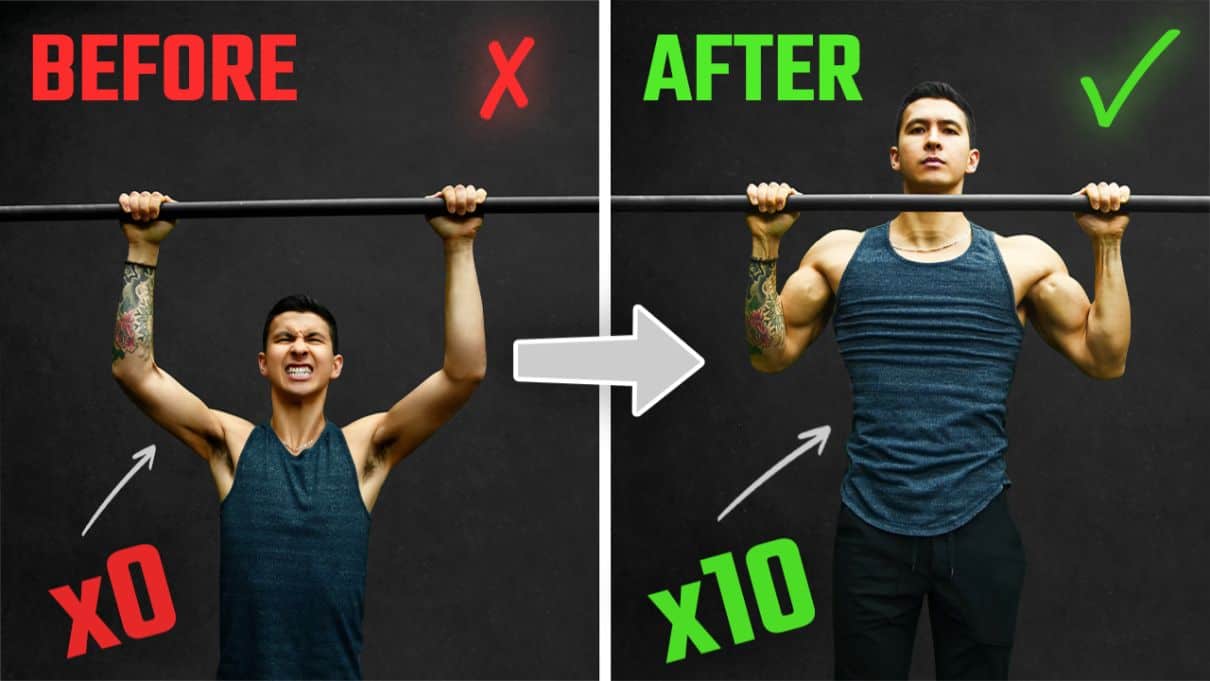
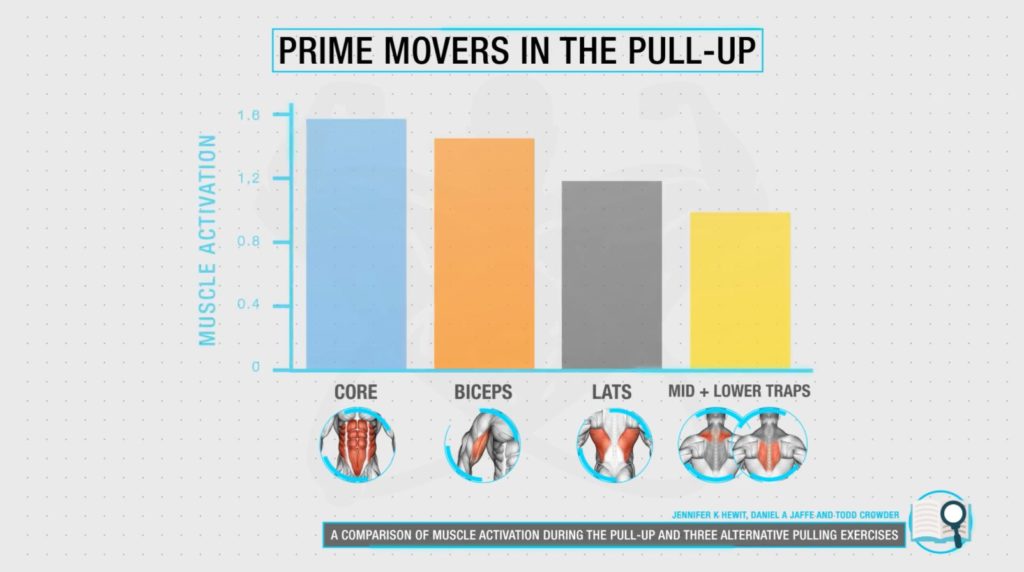
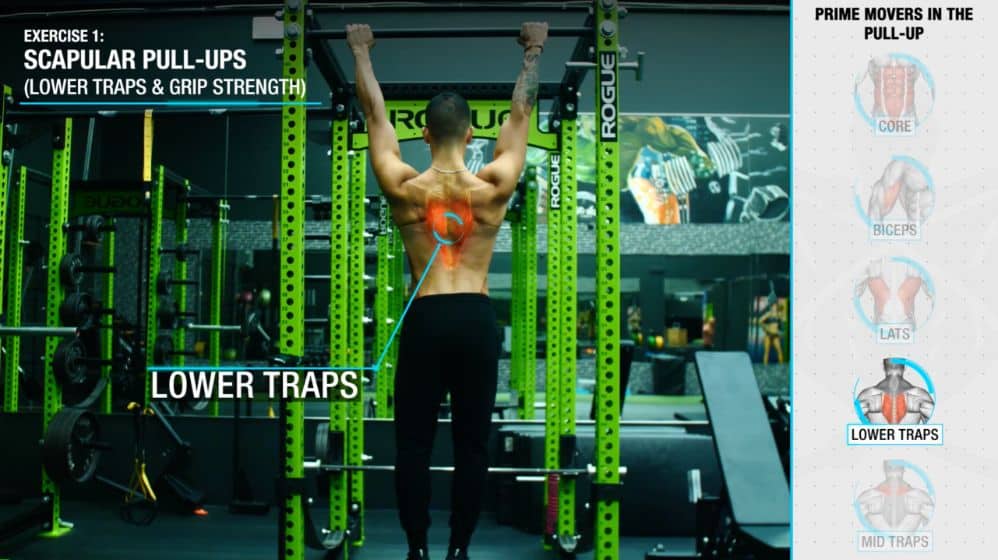 Given that they’ve
Given that they’ve 